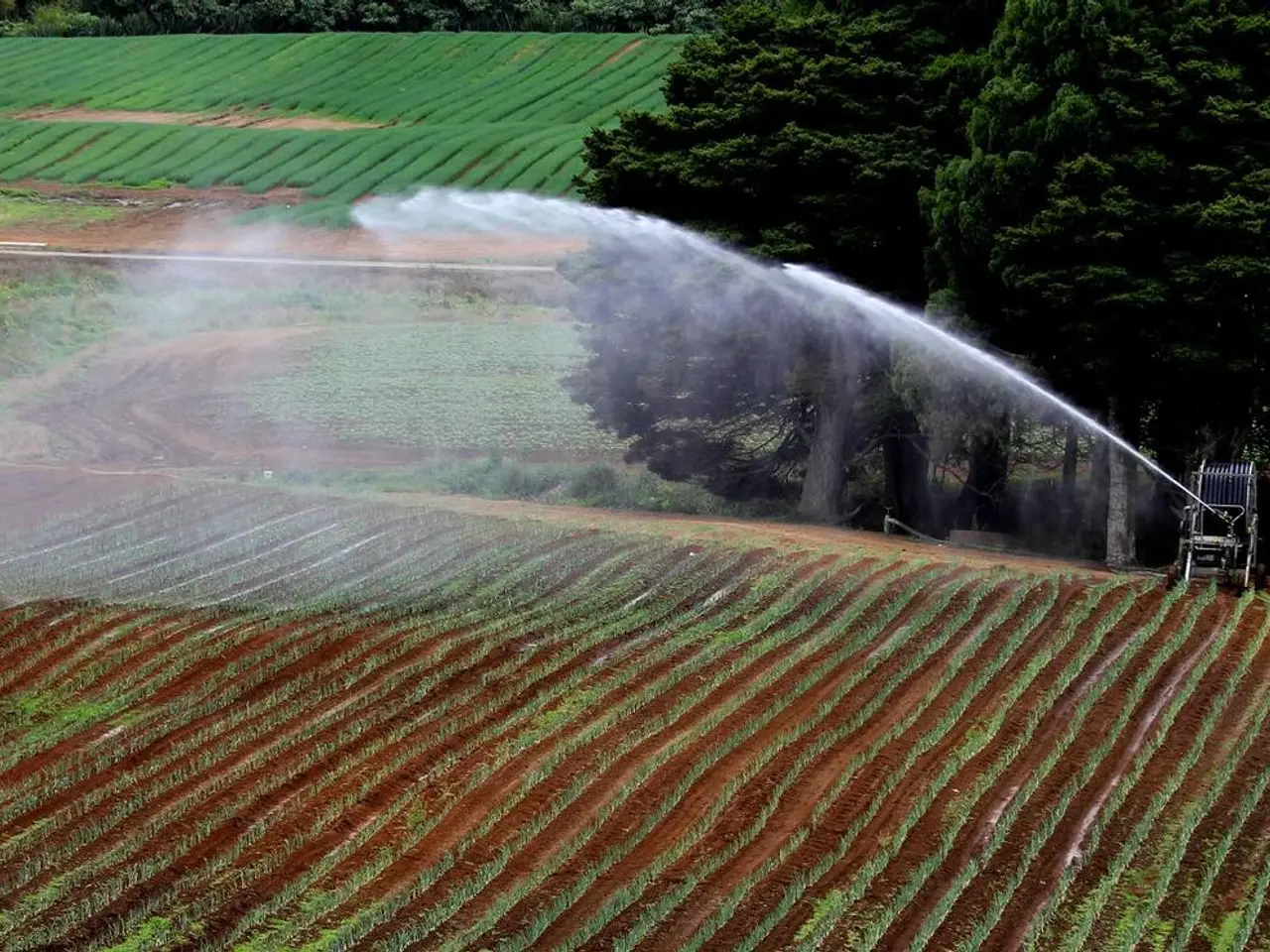Soil Nutrient Renewal Techniques Unveiled by Farmers
In the world of modern farming, the importance of sustainable practices is increasingly being recognised. One such practice that is gaining traction is the use of cover crops. These crops, often legumes, grasses, or brassicas, are planted during off-seasons, offering numerous benefits for soil health and productivity.
Cover crops act as a physical barrier, reducing soil erosion caused by wind and water, suppressing weeds, and preventing nutrient loss such as nitrogen leaching. Leguminous cover crops, like clover, fix atmospheric nitrogen through symbiotic bacteria, reducing the need for synthetic fertilizers and enriching soil fertility. As cover crop roots grow and decompose, they create soil pores that improve water infiltration and break compacted soil layers, while their biomass increases soil organic matter, which improves soil structure and aggregation.
The benefits of cover crops extend beyond physical improvements. They promote greater soil microbial diversity and activity, which enhances nutrient cycling, including carbon and nitrogen. This improved microbial community also leads to the formation of glomalin, a soil glue that stabilises soil aggregates. Earthworm activity stimulated by cover crops further increases soil porosity and nutrient cycling.
While benefits like weed suppression and erosion control can be seen immediately, improvements in soil structure and productivity typically increase significantly over multiple years of continuous cover cropping. Proper species selection and management, including mixes of legumes and grasses adapted to local conditions, and methods like no-till termination, optimise these benefits for sustainable cropping systems.
In addition to cover crops, other strategies are being employed to manage soil health. Strategies for managing soil microbes include adding beneficial microbes and suppressing harmful ones. Farmers can enhance the impact of cover crops by planting several species together in a mixture, as each cover crop species provides its own unique benefits. Managing livestock grazing areas and implementing rotational grazing systems can help recycle nutrients across the landscape and return valuable nutrients and organic matter to the soil.
Deep-rooted cover crops like forage radishes create natural water passages, while cover crops like rye, wheat, oats, clovers, and legumes can improve water infiltration into the soil. Diversifying crop rotations can improve soil health and function, reduce input costs, and increase profitability.
A prime example of the benefits of cover crops can be seen at Macauley Farms in Livingston, New York. By implementing no-till farming on 567 acres of crops, they increased their annual net income by over $25,000. No-till farming, where seeds are sown directly into the soil without churning the top layer, reduces soil erosion, nutrient runoff, and greenhouse gas emissions. By adopting no-till practices, farms can reduce fuel usage, labour costs, and herbicide expenses, and achieve higher net income.
In conclusion, cover crops enhance sustainable agriculture by reducing erosion, improving nutrient availability through nitrogen fixation and organic matter addition, enhancing soil water retention, and fostering a healthy, diverse soil microbiome that drives long-term soil health and crop productivity. By embracing cover crops and other sustainable practices, farmers can lead to better yields and profits, demonstrating the importance of cover crops in sustainable agriculture.
Cover crops, through nitrogen fixation and organic matter addition, contribute to improved soil health and fertility in sustainable farming, as demonstrated by leguminous species like clover. The science of environmental-science and health-and-wellness indicates that cover crops also play a significant role in nutrient cycling, especially carbon and nitrogen, and in water infiltration and soil structure improvement. Climate change mitigation strategies can further benefit from cover crops, as they help with soil carbon sequestration and reduce greenhouse gas emissions. Consequently, the integration of cover crops, other sustainable practices, and health-and-fitness-exercise principles in modern farming can lead to better environmental outcomes, increased productivity, and financial returns.




